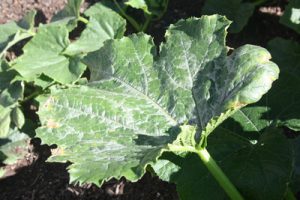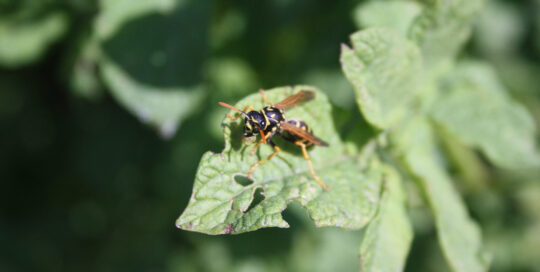What’s Wrong With My Squash Plants?
Views: 8710

This is the time of the year when I receive a number of calls from folks who want to know what’s happening to their plant. It might be an insect wreaking havoc on it, or some unknown disease that turns hopes of a bountiful harvest into frustration. I received a call this week concerning squash, which is probably one of the plants that gives people the most frustration, so I thought it would be good to offer a few ideas on what might be happening.
Issues with Squash
The plant I looked at the other day has gray veins. While very pretty (a variegated-leaf squash anyone?) it didn’t look quite right, particularly combined with the chewed up looking leaves. My first thought was mosaic virus, although after taking a look at it and talking to disease specialist, it looks like the gray veins are either just that particularly variety or a soil issue. It’s not a disease. The chewing isn’t related. It’s most likely a pill bug or other soil level insect that will be eliminated quickly with diatomaceous earth.
Here are some other issues:
• Leaves that look like they’re covered in powder? This is the common powdery mildew. Although it can reduce photosynthesis, it’s usually not fatal. Cut off the affected leaves. You can also spray it with a mix 1:5 ratio of milk to water.
• Leaves that yellow and curl? Look for aphids. They’ll be underneath the leaves and literally suck the life out of the plant. Spray them with insecticidal soap.
• Leaves that turn colors such as a pale green or yellow or brown, with thin webs on the underside of the leaves? Sounds like spider mites. Spray them with the insecticidal soap.
• If all of a sudden your squash plants wilt, it’s probably the squash vine borer. If the larvae are already in the stems of the plant (indicated by the wilting), just pull the plant. To prevent it you can cover the plants in the spring with floating row cover to prevent the adults from laying eggs on the plants. Or, if it’s not too late in the season (July-ish) you can plant a second crop of zucchini or other summer squash in areas where you’ll have enough time for it to harvest before a heavy frost. I know a family in Ohio who regularly plants zucchini in July to prolong their season for market sales, as well as to minimize the pest situation.
Cont.
• Yellow spots that turn brown on the leaves? Look around for squash bugs. I know people who vehemently hate these things, and I can understand why. There can be a lot of them, and all together they can do a lot of damage. Look for the reddish eggs on the underside of the leaves and squish them. The grey nymphs are hard to find, but if you do pick them off and drown them in soapy water. Same with the squash bugs themselves. Usually if the plant can survive an early onslaught, more mature plants will be okay the rest of the season.
• Chewed parts? Cucumber beetles wreak major damage on a lot of the concurbit family because they transmit diseases such as bacterial wilt and mosaic viruses. They’ll start feeding on the plants from early spring, and continue throughout the season until they crawl into debris to overwinter. Protect your plants with floating row covers from the beginning. If you have an issue with them, pull the plant and toss it mostly due to the bacterial or viral infection. Chemical measures do work on the beetles, although it’s a last resort.
Unfortunately, there are plenty of other things that can go wrong with squash plants, but hopefully this will offer a few answers if yours aren’t looking healthy.
Meet Amy Grisak
Amy is a freelance author and photographer in Great Falls, MT who specializes in gardening, foods, and sustainable agriculture. She provides information on every kind…
Amy's Recent Posts

Looking into the Crystal Ball for a Pest Report








